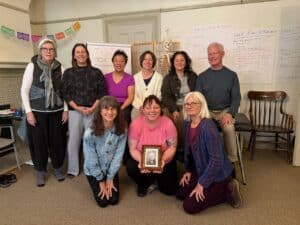Immune boosting in Chinese medicine and Western biomedicine differs. The two medical systems treat colds, flu and other illnesses differently. They are based on different ideas of the body, health and healing. For immune boosting, how does theory affect the practice of medicine, East and West?
Immune Boosting: The Microbe and the Terrain
“…The microbe is nothing. The terrain is everything.” — Louis Pasteur
Germ theory – the idea that microorganisms are the primary cause of infectious disease and must be guarded against – arose in the nineteenth century. It has been a guiding principle of biomedicine ever since. Biomedicine and Western popular culture still both largely see microbes as “the enemy.” The ultimate goal is eradication. This line of thinking has led to emphasis on the development of vaccines for prevention, and pharmaceuticals (antibiotics, antivirals) for treatment. The Western approach targets specific pathogenic agents as the cause of disease.
Louis Pasteur is regarded as the father of germ theory. His research focused on identifying specific microbes as disease agents and finding ways to fight them. His friend and colleague, Claude Bernard, held a contrasting theory. Bernard believed that the stability of the internal environment (the terrain) is paramount in health, and of greater importance than the microbe. Bernard’s theory later became known as homeostasis.
Pasteur, on his deathbed, is said to have recanted his theory and stated “Bernard was correct. I was wrong. The microbe is nothing. The terrain is everything.” Perhaps the truth is in between.
With a little nudge from natural medicine and modern research, Western biomedicine has slowly shifted toward recognition of the importance of homeostasis. Study of the microbiome (the microorganisms that live inside the human body) has led to recognition that our internal terrain includes an entire ecosystem of beneficial microbes which are essential to life. Many microorganisms are continuously present and become pathological only when certain conditions of systemic weakness or imbalance are met. The goal of intervention is not to eradicate microbes, but rather to restore internal balance.
Chinese Medicine is Ecological Medicine
Chinese medicine goes beyond homeostasis and embraces our place in the world outside of our skin. Creating and maintaining harmony of the body’s internal terrain has been a central principle of Chinese health and healing for millennia. The Chinese also understood that well-being can only truly be maintained if we are in harmony with the world we inhabit. They innately understood that humans are part of the web of life, and can not fully maintain health without it.
The ancient Chinese didn’t have microscopes and didn’t know about microorganisms, but they understood that pathogenic factors exist and sometimes attack the body from outside. They saw these pathogens are part of the larger system – something to be expelled from the body rather than eradicated.
The principle of balance in Chinese medicine is embodied beautifully in the tai ji (meaning “the supreme ultimate”) symbol of yin/yang, the union of opposites. (See the image above.) Yin/yang are two aspects of the whole, and have no existence independently of each other. They are organizing principles that express relative states of being, eternally united yet constantly changing. The tai ji gives us an exquisite lens through which to view relationships and living systems: day/night, internal/external, male/female, wellness/illness, host/pathogen, friend/enemy, East/West, love/hate.
Breathe In, Breathe Out
Unlike germ theory in the West, Chinese medicine has never viewed host/pathogen relationships as linear cause-and-effect. Relationships are cyclical and are part of a larger, intricate system which is constantly changing. Life is process.
On the surface, a healthy organism may appear to be in a steady state of well being. Below the surface, life is a balancing act. In the tai ji symbol, the light segment contains a dark spot, and the dark segment contains a light spot. Each segment contains and transforms into its opposite, unceasingly.
If this seems abstract, just think of your breath. Inhale/exhale, in/out, yin/yang. We are in constant dialogue with the outside world, through this exchange of gases. Most of the time, breath happens below the level of consciousness. Our lives are completely dependent on this continuous rebalancing of molecules.
Immune Boosting: Medical Intervention East and West
Chinese medicine is ecological medicine. Human beings, like all organisms, are intricate systems embedded in the web of life. We are deeply dependent on it for our well being. Life is process, and change never stops. Medical intervention, whether with herbs or acupuncture, is designed with this in mind. There are practical implications for prevention and treatment of colds and flu:
- Chinese medicine emphasizes keeping the “internal terrain” in good shape through healthy lifestyle choices, so that the body is robust when it needs to fight off “the bugs.” You are less likely to become ill, and more likely to recover quickly.
- Western medicine promotes the flu vaccine, which has risks and side effects, and does not guarantee immunity. Efficacy varies from year to year, depending on flu strains, and according to the CDC (Center for Disease Control) is usually only about 50-60 percent at best. To read more about the pros and cons of flu vaccine, click here.
- Chinese medicine emphasizes early intervention when illness strikes. Pay attention to early signs and symptoms. Start taking herbs as soon as possible. Stay home and rest.
- Chinese herbal formulas and treatment modalities rarely have side-effects, unlike Western pharmaceuticals, because the properties of the formulas are balanced. For example, an herbal formula designed to treat bronchitis contains herbs which have been shown by modern research to have antiviral and antibacterial properties. Some of these herbs can cause digestive upset, much like Western antibiotics often do. The Chinese approach is to add other restorative herbs to protect the digestion and prevent side-effects, creating a balanced combination.
Chinese medical intervention treats both symptoms and the pathogens causing colds, flu and other respiratory disorders, but never at the expense of creating imbalance in other parts of the system. The goal of intervention is always to restore harmony to the entire organism.



